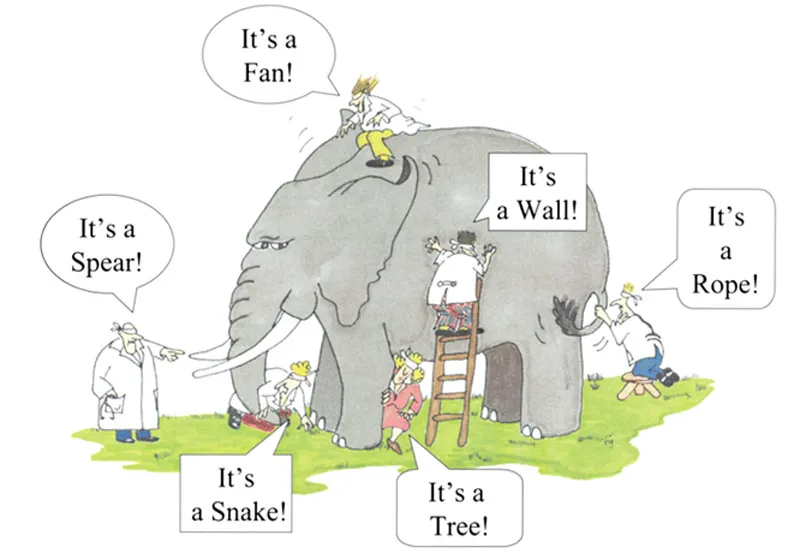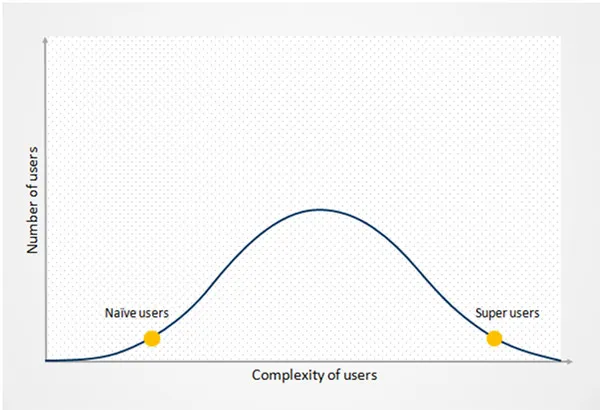User research - it’s not about talking to users, but how you go about it
First, why should I bother talking to my users?

All of us know it is important to talk to our users, our customers. However, few of us do. Why? Because most of us have divided views on whether talking to users is actually necessary. Some of us believe in what Henry Ford said, “If I ask my customers what they want,they would have said they wanted faster horses.” Then there are others who are inspired by the legendary Steve Jobs and think that he never talked to users because no user would have told him the need for the iPod or iTunes, let alone the legendary iPhone. So, why bother? Since most of us are unlike Jobs, it behooves to constantly engage in user research.
You might have the insights and intuition about what your user or customer thinks, but you can't say with conviction what they truly want.
So, what should you do? Well... just talk to them! Dozens of them. No, wait. Hundreds of them!
It will make you a better entrepreneur, a better speaker, heck, even a better businessman. Needless to say, It is your users, your audience, your customers that define whether your offering satisfies their needs or not.
How to do user research?
Now that we’ve addressed the why, the next imperative question is how should you approach user research? Firstly, the objectives for user research should be clearly defined. You are trying to understand the user's context, their mindset, their ‘daily lives’, the problems and challenges they are facing and how what you are doing fits in that context (or not). You are trying to see if what you are doing is relevant to them. If it is relevant, is it a nice-to-have or a must-have? If not,thank the Lord since you may have saved hours, weeks or even years of your lives doing something that may not be relevant.

Don't expect the moon. You are not asking for their ‘opinion’, you are not designing a product feature or validating a user interface. You are simply trying to understand the relevance of your offering to your users.
Whom should you target?
Once you’ve set your objectives, spell out who the users you should talk to are and how to pick them. It is my conviction from years of being in the consumer product world, that you learn the most from users who are either ‘naive’ or users who are ‘super users’. This, despite the fact that you are building something for the masses.

The reason is that you learn the most from either end of the spectrum. The naive users tell you if it is easy and relevant for them and the super users will tell you if it’s powerful enough to solve something deep and will likely also give you critical feedback. You are not building for either of them, per se, but it is good to cater to the extremes, like Google, which always builds the 'backend' product for power users and makes the User Interface easy enough for the naive users.
How many users should you talk to?
There's a general rule of thumb I've picked up from various experts and user studies over the years. You should talk to as many users as possible until your ‘new’ insights start diminishing or reducing per interview. Think of this as popping a bag of corn in the microwave. Until you hear pops, keep going and when it slows down, stop.
Practical experience shows that this diminishing of new insights happens somewhere between 10and 30 users. Anything less than that says you haven't picked the right users and anything more than that says you haven't got a focussed objective for the research.
Tools and techniques
Now, comes the fun part. You have picked the users and set appointments with them. You need to get out in the field and talk to the users. Ideally, you should talk to them in their setting - could be their home, office, or a neutral location, where they can be themselves without any pressure of being interviewed. You have to then make them comfortable - talk about who they are, their lives, their day, what is the last movie they saw, their favorite cereal, and so on. Do not discount this as just ‘small talk’ or being too inquisitive;it is important that you learn from these users the context in which they are using your offering. That is real feedback.

One of the simplest techniques is to ask open-ended, non-leading questions. What do do you for fun over the weekend? How do you spend your idling hours? As you can tell, there are no right or wrong answers. The user should realise that too and open up. It is in that context that you are navigating your conversation while still subtly looking for whether your perceived pain point exists or not. The open-ended questions and answers will help you figure out is this a top-of-mind problem area for the users, how they are solving it today, if they are satisfied with the solutions or the current state-of-the-art etc. You are listening for aberrations and you are looking for commonalities between users.
Why is this important? Because users are human,they will say something and do something else. Humans are conditioned to say something that's socially acceptable. To get them to surface their true selves is both an art and a science. Remember, get them comfortable. That usually does the trick.
Using the observations
Once you've completed your user interviews, you can synthesise your learning, observations and mindsets as you go along, or at periodic checkpoints. It is important to continue to listen and be open minded to get more data.
All said, user research is an important tool but not the only one. You should use this qualitative data to triangulate with that you know quantitatively. There are easy ways to run online polls such as SurveyMonkey, TwtPoll, or whatever. You might already have a product or service that is used by thousands of customers;you can observe their behaviour through regular off-the-shelf analytical tools. You can triangulate what the users told you verbally with what another, completely different set of users that you poll onlinesay.
These findings, if used right, will help you become a better product manager, a better designer and even a better entrepreneur. What are you waiting for? Go talk to some users today!
(Disclaimer: The views and opinions expressed in this article are those of the author and do not necessarily reflect the views of YourStory)







